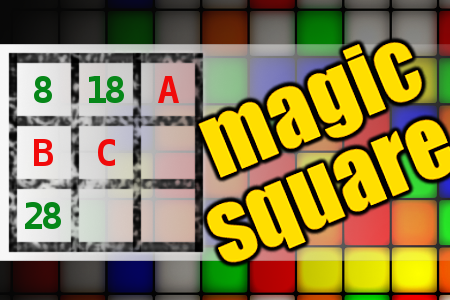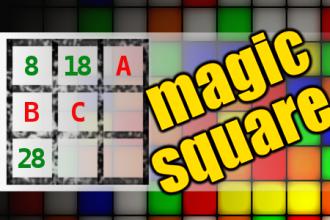MAGIC SQUARE: Calculate A+B*C
The aim is to place the some numbers from the list (6, 8, 9, 14, 17, 18, 23, 27, 28, 33, 65, 94) into the empty squares and squares marked with A, B an C. Sum of each row and column should be equal. All the numbers of the magic square must be different. Find values for A, B, and C. Solution is A+B*C.Correct answers: 1
#brainteasers #math #magicsquare

The Local sheriff was looking...
The Local sheriff was looking for a new deputy. When a blonde walks in to try for the job, he asks her "Okay, what is 1 and 1?"
"Eleven", she replies.
The sheriff thinks to himself, "That's not what I wanted, but I guess she's right!"
"What two days of the week begin with the letter T?" he asks.
"Today and Tomorrow", the blonde answers.
The sheriff is again surprised that the blonde has supplied a correct answer that had not even occurred to him.
"Now listen carefully, who killed Abe Lincoln?" he asks her.
The blonde looks a little surprised. She thinks really hard for a minute and finally admits, "I don't know."
"Well, why don't you go home and work on that one for a while?"
So, the blonde wanders over to the beauty parlor, where her pals are waiting to hear the results of the interview.
The blonde was exultant. "The interview went great!" she says. "First day on the job and I'm already working on a murder case!"
"Eleven", she replies.
The sheriff thinks to himself, "That's not what I wanted, but I guess she's right!"
"What two days of the week begin with the letter T?" he asks.
"Today and Tomorrow", the blonde answers.
The sheriff is again surprised that the blonde has supplied a correct answer that had not even occurred to him.
"Now listen carefully, who killed Abe Lincoln?" he asks her.
The blonde looks a little surprised. She thinks really hard for a minute and finally admits, "I don't know."
"Well, why don't you go home and work on that one for a while?"
So, the blonde wanders over to the beauty parlor, where her pals are waiting to hear the results of the interview.
The blonde was exultant. "The interview went great!" she says. "First day on the job and I'm already working on a murder case!"

